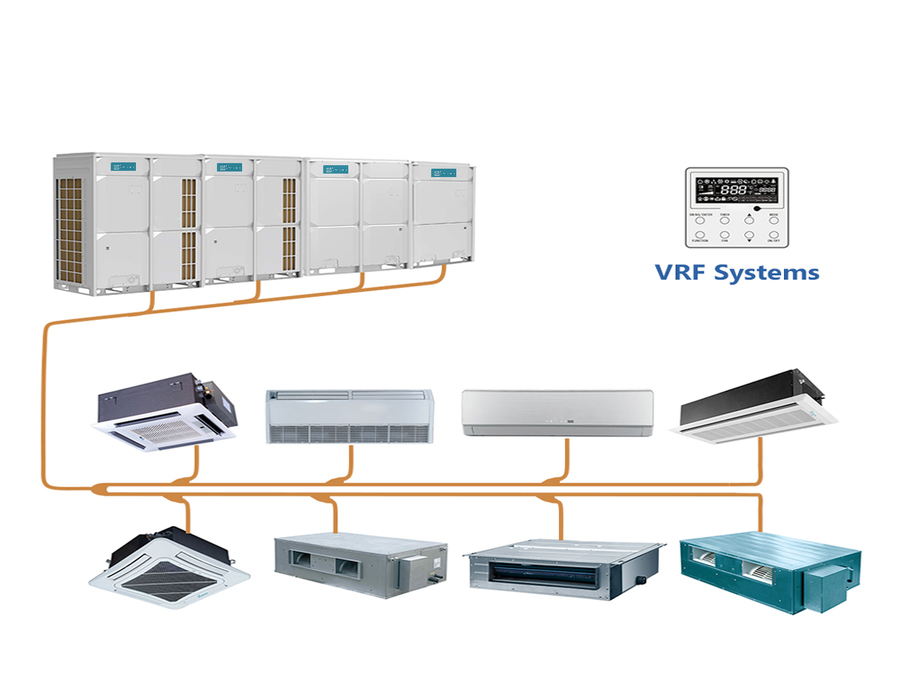
VRF stands for variable refrigerant flow (VRF). A VRF system is still the only commercial system that continuously adjusts the refrigerant volume within the system to match exactly the heating or cooling requirement in each area, for optimum comfort and maximum energy efficiency. A VRF air conditioning system is basically large multi-split systems where a number of indoor units are connected to the outdoor unit. These VRF air conditioning systems are generally used for larger applications where the alternative might be a central chilled water system or central ducted system.
Against these other types of system VRF air conditioning would generally be comparable in capital cost but they are quicker to install and more energy efficient to run.
Like traditional central air conditioning systems used for residential and light commercial spaces, VRF HVAC systems are air-cooled and refrigerant-based, using outdoor condenser units and indoor fan coil units. But the similarity stops there. Instead of one large, noisy unit pumping out air to the whole space, a VRF HVAC system features several smaller air handlers that can be individually controlled and piped back to one system. The term variable refrigerant flow, or VRF, refers to the system’s ability to control the amount of refrigerant flowing to each of these small air handlers.
This sophisticated new VRF HVAC technology is capable of providing not only cooling, but also heat, and even both simultaneously to different areas within the space. The use of multiple indoor units provides the ability to create zones that can be individually controlled. What’s more, these VRF systems are very quiet and energy-efficient because the variable-speed compressor runs only at the capacity needed for the current conditions. Below are some of the reasons to choose a VRF air conditioning system.
VRF HVAC systems use less energy for several reasons. The system is designed to provide exactly the amount of cooling needed for the current conditions, which means it runs less frequently and at a lower capacity. The VRF HVAC system is also designed to capture heat from the cooling process and reuse it in other areas that may need heating.
In a VRF HVAC system, the noisier condensing unit is typically outside, and the indoor air handlers are smaller and quieter than a traditional split system types with outdoors and indoors separated.
The VRF HVAC system captures residual heat absorbed from the air during the cooling process, and redirects that heat to other parts of the building that need heat. That means you can have air conditioning in the living room for a party, while you heat the bedroom where the baby is sleeping. Or you can have heat in the winter for cooler window offices, and air conditioning in the central conference room for a large meeting.
The VRF system’s compressor can detect the precise requirements of each zone, and send the precise amount of refrigerant needed to do the job. As a result, each area of your space is consistently comfortable with well-controlled humidity and no hot or cold spots.
Since the VRF HVAC system is designed to run only when needed and under partial-load conditions, there is less wear and tear on the parts. That means fewer breakdowns. Also, if something goes wrong with one air handler, often the others are unaffected. That means your whole space won’t be without air conditioning all at once.
Since the air handlers are smaller and VRF HVAC systems don’t usually require ducts, they don’t require as much wall and ceiling space for the equipment. That means you get to keep those gorgeous high ceilings in your apartment.
For residences, you can take advantage of mobile control technology that lets you adjust temperature settings for each zone from your mobile device. For commercial settings, the VRF system’s built-in controls may allow you to skip purchasing expensive building management software.
For more insight on the same call us we will help in any way we can. Don't hesitate to contact us if you need the quotation.